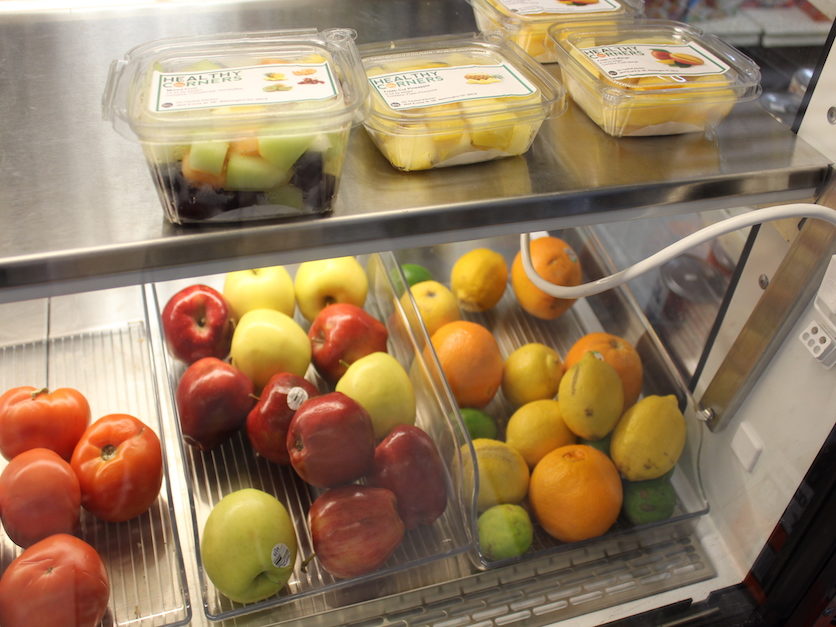
The Food and Drug Administration’s Human Foods Program will focus on microbiological food safety, food chemical safety and nutrition in the coming year under its reorganization.
The program released its 2025 priority deliverables on Wednesday detailing the primary focus areas for its first year under the reorganization. The goals include issuing guidance on action levels for lead in food intended for infants and young children, finalizing the rule on the “healthy” food labels, and proposing a rule on front of package nutrition labeling.
The agency initiated the HFP reorganization after critiques of the handling of the 2022 infant formula shortage. Recommendations by the Reagan-Udall Foundation shaped the reorganization which was approved in May and implemented Oct. 1.
Under the new plan, the HFP will take over the roles of the Center for Food Safety and Applied Nutrition and the Office of Food and Policy Response. It will also consolidate some responsibilities from the Office of Regulatory Affairs, which was renamed the Office of Inspections and Investigations.
Throughout 2025, the program will chart a multi-year strategic plan to advance its vision and mission. Until then, the agency released the set of deliverables for its first year.
Nutrition
Next year, the agency hopes to take action on some highly anticipated rules in the nutrition space, including the final rule on the 30-year-old “healthy” definition and work on a proposed design for a symbol manufacturers could include on products. The proposed rule came out in 2022.
FDA also plans to issue a proposed rule on mandatory front-of-package nutrition labeling. The agency has been testing a variety of ideas that will hopefully allow consumers to quickly and easily identify healthy food options. Consumer groups have urged FDA to not delay this rule, which was initially expected this month.
The agency will also publish a national strategy to support new infant formula manufacturers to increase supply and prevent future shortages.
Meanwhile, FDA wants to work with other federal agencies on advancing nutrition research. The priority deliverables specifically mention boosting research on the link between ultraprocessed foods and poor health outcomes.
In its latest meeting, the Dietary Guidelines for Americans Advisory Committee said there was not enough research available to draw strong conclusions or recommendations about ultraprocessed foods. The committee, which reviews science and submits recommendations for updating the guidelines, was tasked with studying ultraprocessed foods for the first time.
Food safety goals
Under microbiological safety, the agency plans to strengthen regulatory oversight. This includes finalizing an implementation plan and furthering the Food Safety Modernization Act final rule on pre-harvest agricultural water, and the FSMA 204 food traceability final rule. The agency also plans to issue final guidance for the produce safety rule and develop further guidance documents and resources for industry.
The priorities also point to a recently announced study in southwest Indiana to research the ecology of human pathogens in the area following several salmonella outbreaks linked to melon production. The agency will also better integrate genome tracking data into the CDC’s outbreak surveillance platform to make it easier to identify and respond to food -related outbreaks.
The agency also is seeking to increase transparency, data sharing and understandings from recent food-related outbreaks. The program will implement its regulatory partnership agreement with Ecuador for shrimp, and sets out to establish additional agreements with India and Indonesia for seafood.
In 2025, the agency will also advance the silo study of the highly pathogenic avian influenza, which is in collaboration with USDA, CDC and the National Conference on Interstate Milk Shipments.
Food chemical safety
Similarly, the agency plans to strengthen oversight of food chemical safety and dietary supplement policy. This includes completing a review of premarket review processes for food and color additives, food contact substances and substances classified as generally recognized as safe (GRAS). FDA will also update the framework for post-market assessments of chemicals in food.
Next year, the agency also plans to issue guidance to establish action levels for contaminants in foods intended for infants and young children, including those for lead. This is part of the agency’s Closer to Zero goal, and could set more defined goals for the acceptable limit of lead and other contaminants in spices like cinnamon.
The agency will also focus on better understanding exposure to per-and polyfluoroalkyl substances (PFAS) which are used in a variety of products and can enter the food supply.
In reorganizing the Human Foods Program, the agency is prioritizing hiring permanent leadership and then developing a multi-year strategic plan. Until then, the agency will work to integrate and align FDA food laboratories and establish the Human Foods Advisory Committee. HFP will also work with the Office of Inspections and Investigations to improve the planning and tracking of domestic and foreign facility, farm and port of entry inspections and sampling.
For more news, go to www.Agri-Pulse.com
